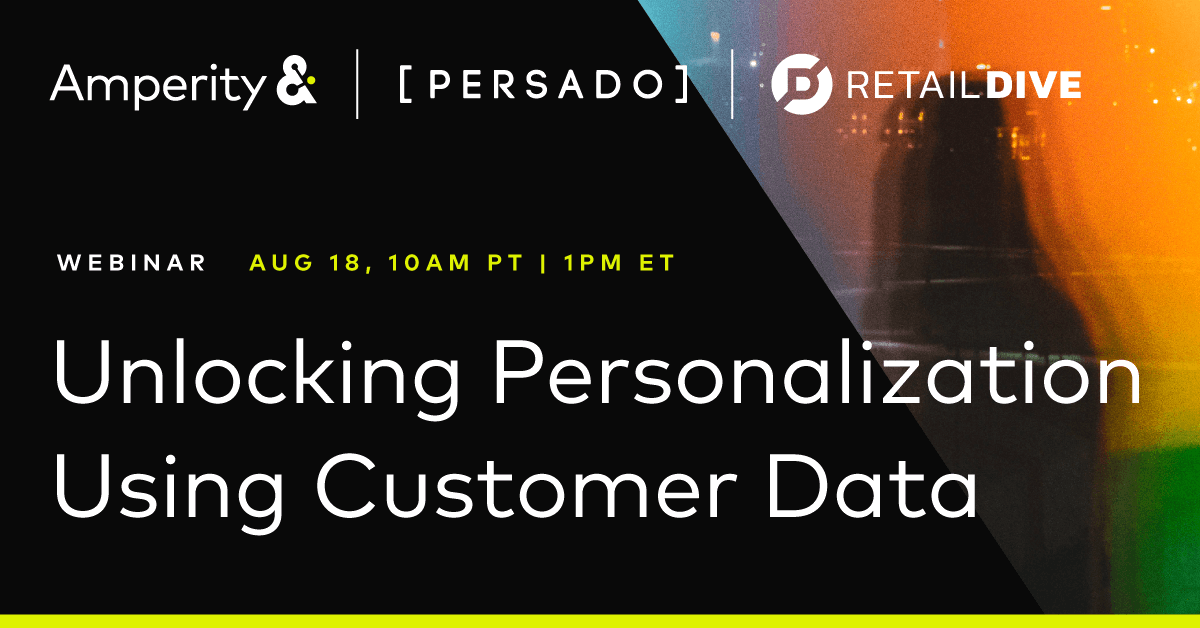June 23, 2023
How to achieve real-time personalization

Audiences increasingly expect content catered to their unique preferences. With real-time personalization, you can instantly deliver customized content to consumers based on their interactions with your brand. This real-time response provides users who are already engaging with your brand with a better customer experience.
Effective real-time personalization combines two things:
- A person’s relevant attributes (such as their intent, potential, behavior, profile, and firmographics).
- An online experience curated to present only the most relevant content.
Websites, emails, text messages, and advertisements on landing pages are all examples of content media that can be personalized.
Companies that use real-time personalization can see a dramatic increase in business value, elevating everything from customer acquisition rates to higher brand loyalty.
The foundations of real-time personalization
At its core, real-time personalization revolves around data.
Artificial Intelligence (AI) and Machine Learning (ML) analyze various sources of customer data to identify key patterns and predict outcomes. A company can then leverage the insights to create accurate, individualized customer journeys.
Here is a breakdown of the specific information brands can activate to drive personalization with AI and ML:
- Who: This is your target audience. Define the members of your customer base according to different combinations of attributes. These can include their location, buying history, price sensitivity, online behaviors, and other factors.
- What: This refers to your customers’ motivations. For example, what are their interests, product needs, and problems they’re facing that your brand or product can solve.
- Where: This tells you where to reach prospects with a real-time personalized approach, such as by website or email.
Barriers to adoption
Personalization done right helps motivate customers to take a desired action. That may be a purchase, an upgrade, a self-service action, or some other form of engagement. But despite the fact that customers expect personalized experiences, some companies are still hesitant to adopt these new best practices. This is due to several common obstacles companies face when trying to implement a personalization strategy for their marketing campaigns. These include:
- Inability to procure sufficient customer data. Real-time personalization is nothing without data—and massive amounts of data, at that. The data needed to deliver a truly personalized experience should include a variety of information. Such as, who your target customer is, what their motivations are, and where they are most likely to engage with your message. Ideally, you should have as large of a sample size as possible. This can be difficult if your current data-collection methods are limited.
- Inability to personalize across channels. For real-time personalization to be at its most effective, make sure you can provide personalized content across multiple channels. If you cannot personalize your email, web, or SMS content, you are leaving the door open for other brands to sweep in and capture customer attention with customized messaging of their own.
- Inability to handle a huge number of content permutations. Organizations have to be well-equipped to manage a large number of content permutations. Real-time personalization lets you test as many variables as you need to develop a host of messaging and customization options.
- Inability to scale. Not all tools are “one-size-fits-all.” Even though real-time personalization is a great technique for organizations of any size, the tools you use to achieve it might not scale with your business. Large enterprises require a large volume of content. Companies may lack the internal resources to keep up with the demand.
How to enable real-time personalization
Despite the challenges organizations may face while adopting real-time personalization, there are solutions as well. With real-time personalization becoming increasingly important for markets looking to expand, here are two steps to ensure your personalization process is as successful as possible:
Gather first-party data
First-party data (also known as 1P data) is information a company collects directly from its audience via its own online and offline channels, including website visitors, social media followers, email subscribers, and customers. First-party data can include critical information, such as which websites a customer visits, purchase history, behavior, interests, and preferences. For years, companies have relied on the use of first-, second-, and third-party data. But as governments have introduced stricter data privacy regulations and browser companies have begun to phase out cookies, it may be harder for companies to compile second- and third-party data. Collecting first-party data grants you more control over the data you have. Your company can use the information gathered to create highly-targeted ads, relevant content, and personalized experiences.
Invest in technologies that enable real-time personalization
Another key tip is to invest in tools that automate as much data analysis as possible. Because real-time personalization relies so heavily on AI, it is not possible to manually execute. Tools like the Persado Motivation AI Generative AI solution automates your ability to communicate using the words that motivate customers to act. Tools like this allow brands to convert ideas into new messages and integrate your company’s MarTech stack.
Real examples of real-time personalization
In a survey by the eCommerce platform Kibo, 70% of marketers using personalization across the online experience saw an ROI of at least 200%. Companies can use real-time personalization in several ways. Here are several areas where real-time personalization is especially successful.
- Cart abandonment emails: A recent study from the Baynard Institute discovered the average cart abandonment rate is a shocking 69.99%. Providing shoppers with reminders about the specific items they’ve left in their cart can encourage them to complete their transactions. (Read more in our article the Ultimate Guide to Reducing Online Cart Abandonment for Enterprise Retailers.)
- Location-based push notifications: If a customer has installed your app and has allowed location tracking, your company can send them push notifications when they’re within a certain distance of one of your stores. You can even offer nearby customers a special discount or provide them with turn-by-turn directions. Persado recently helped a retailer increase in-store sales by 66% through Facebook ads and located-based push notifications.
- Streaming service recommendations: Brands like Netflix and Spotify are known for providing their customers with real-time recommendations based on the content they’ve previously enjoyed. Giving customers the option to “like” or “dislike” the content they consume enables a more personalized experience.
- Ecommerce product recommendations: Some brands face the challenge of having seemingly endless merchandise databases. Real-time personalization eliminates the need for scrolling. Brands like Amazon utilize this approach to present customers with products based on their past purchases and browsing history.
- Retargeting ads: This technique is popular on Google and social channels like Facebook and LinkedIn. Retargeting allows brands to serve offers to people immediately after they visit a specific page on your website. It also allows them engage with a piece of content on your channel, keeping your brand at the forefront of the customer’s mind.
Achieve personalization at scale with Persado
Real-time personalization is critical for long-term success in an era where consumers value individualized experiences. To attract new consumers, marketing campaigns must ensure their messaging inspires each individual to engage and act with their product.
However, properly executing personalization campaigns at an enterprise scale is challenging. Many companies do not have the internal resources available to undergo such a process on their own.
Carrefour, a leading European retailer and grocer, relies on language personalization to drive its aggressive e-commerce strategy. Using the Persado Motivation AI platform, Carrefour effectively generates on-brand messaging to motivate customers to engage. A recent collaboration is a SMS promotion for Black Friday 2022 which netted a 14.5% increased click rate (CTR).
Persado is the only platform that can generate on-brand, personalized content to meet the demand of enterprise-scale requests so that you can achieve the growth your organization needs.
Our latest offering, Dynamic Motivation, addresses cart abandonment by leveling up the checkout experience. Dynamic Motivation incorporates predictive content in real-time to deliver optimized and personalized words and phrases based on a customer’s browsing behavior, purchase history, interests, and preferences. The result is an online cart experience that speaks to customers as if your brand knew them personally.
We can serve as your strategic partner, building roadmaps to meet your company’s objectives while providing world-class governance, dedicated professional services, and the AI that transforms your business with personalized language for your customers.
Transform your business with AI, data, and language. Our solution experts are ready to start a conversation.


